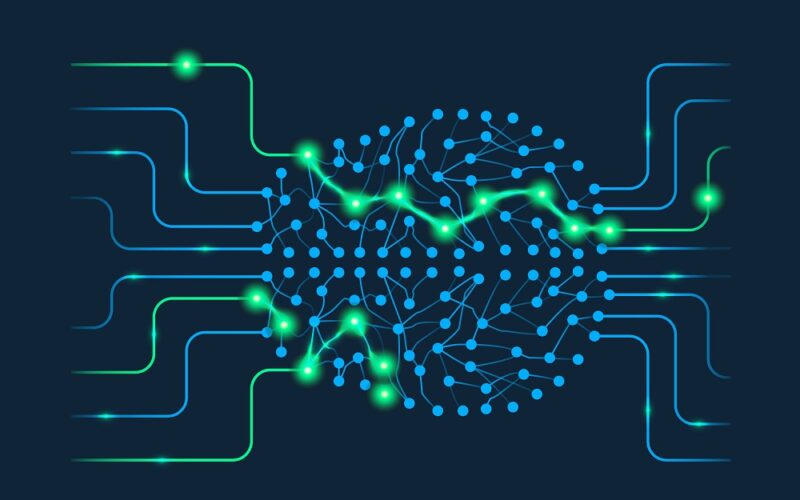(Andy Chipus/Shutterstock)
Generative AI-powered speech-to-speech technology is forever changing the way we communicate. This groundbreaking innovation enables real-time transformation of one person’s speech into another’s voice or even a different language, opening up a world of possibilities. From enhancing customer service experiences to creating immersive gaming environments, and even aiding law enforcement, the potential applications of this voice technology are vast and exciting.
Recent advancements can be attributed to the maturation of machine learning algorithms, the availability of extensive and diverse datasets, and the increasing computational power that supports more sophisticated models. Despite these advancements, challenges persist, including scaling costs, quality issues such as robotic sounding voice transformations, and emerging privacy and ethical concerns.
Let’s explore the current landscape of Generative AI speech-to-speech technology, examining its evolution, challenges, opportunities, and the use cases driving widespread adoption.
Milestones in Speech-to-Speech Technology
The evolution of speech-to-speech technology has been remarkable, progressing from rudimentary voice conversion systems to sophisticated neural network-based approaches. Early attempts produced unnatural outputs, but the advent of machine learning revolutionized the field. Advanced technologies like Recurrent Neural Networks (RNNs) and Generative Adversarial Networks (GANs) now enable high-fidelity speech transformations, capturing the intricate nuances of human voice.
These deep learning architectures have become adept at modeling the complexities of speech, including tone, pitch, and cadence. As a result, modern AI speech-to-speech systems can generate remarkably human-like outputs, opening up new possibilities in areas such as language translation, voice assistants, and accessibility tools for individuals with speech impairments.
Recent Breakthroughs
Generative AI speech-to-speech technology has made remarkable strides in recent years, largely due to transformer-based models like OpenAI’s GPT-3 and Google’s T5. These models, initially designed for language generation, have been successfully adapted for speech-to-speech tasks, leveraging vast amounts of text and audio data to produce highly accurate speech transformations.
Advancements such as Tacotron and Tacotron 2 have revolutionized the field by combining sequence-to-sequence learning with attention mechanisms. This approach enables more natural and efficient speech conversion, preserving the original speaker’s intonation, rhythm, and emotional expression. The result is a more coherent and fluid transformation of speech input to output.
Perhaps the most exciting development is the emergence of zero-shot voice conversion technologies. These innovations allow for the replication of specific voices without extensive training data, opening up new possibilities in personalized customer experiences, voice acting, gaming, and virtual reality. As these technologies continue to evolve, we can expect even more impressive applications in the near future.
Real-World Use Cases and Transformative Potential
AI-powered speech-to-speech technology is revolutionizing customer service. Meaning’s voice harmonization software allows agents to optimize conversations for clarity, while SoftBank’s emotion-canceling technology aims to reduce agent stress by calming angry customer voices.
These innovations focus on improving both customer and agent experiences. The entertainment industry is leveraging this technology to expand creative possibilities. Voice actors can transform their voices for different characters or languages, while historical figures’ voices can be recreated for educational content. This opens up new avenues for storytelling and immersive experiences in gaming and virtual reality.
Generative AI is revolutionizing accessibility by crafting personalized synthetic voices, allowing individuals with speech impairments to communicate more naturally and expressively. This technology also benefits language learners by providing interactive and immersive educational tools, making language acquisition more engaging and effective.
As speech-to-speech technology continues to evolve, its applications are likely to expand across various industries. The potential for enhancing communication, creativity, and accessibility is vast, paving the way for more versatile and inclusive voice interactions in the
future.
Ethical Considerations and Challenges
The rapid advancement of generative AI speech-to-speech technology brings both promise and peril. While it offers unprecedented capabilities in voice transformation, it also raises significant ethical concerns. The potential for creating highly convincing deepfakes has sparked fears of misuse, while the ability to neutralize accents and emotions has ignited debates about cultural preservation and authenticity.
Bias in AI-generated speech transformations remains a critical concern. If training data contains prejudiced language patterns, the AI may unintentionally perpetuate these biases, leading to unfair outcomes. To combat this, researchers are focusing on developing more diverse datasets and refining algorithms to minimize bias.
Privacy issues, particularly regarding voice data collection, have come to the forefront as AI speech technology becomes more prevalent. Ensuring robust data protection measures and transparent usage policies is crucial for maintaining user trust. As AI-generated speech becomes more sophisticated, ensuring the authenticity and integrity of audio content has become crucial. Recent legal cases, such as Scarlett Johansson’s lawsuit against OpenAI, highlight the urgent need for reliable detection of AI-generated speech to
prevent misuse. To address these issues, researchers are developing detection mechanisms to identify AI-generated speech and prevent misuse.
What’s Next?
The future of generative AI speech-to-speech technology is bright, with research focused on improving efficiency, accuracy, and security. Advances in unsupervised learning may reduce the need for large datasets, making high-quality voice models more accessible. Multi-modal AI systems integrating voice, text, and visual data are also on the horizon, promising more natural and nuanced interactions.
While challenges remain, ongoing research aims to address current limitations. Moving forward, balancing innovation with ethical considerations will be crucial to ensure this powerful technology is used responsibly and inclusively, unlocking its full potential across various
industries and applications.
Key Insights for AI Developers
● Generative AI speech-to-speech technology is rapidly evolving, offering new opportunities in communication and accessibility.
● Key challenges include scaling costs, quality issues, and ethical concerns such as privacy and potential misuse.
● Applications span customer service, entertainment, education, and accessibility, with potential for further expansion.
● Addressing bias, ensuring data protection, and developing detection mechanisms for AI-generated speech are crucial.
● Future developments may include unsupervised learning and multi-modal AI systems for more natural interactions.
About the author: Ben Lorica is the former Chief Data Scientist at O’Reilly Media, and the former Program Chair of: the Strata Data Conference, the O’Reilly Artificial Intelligence Conference, and TensorFlow World. Ben is also an advisor to a few exciting startups and organizations: Databricks, Alluxio, Matroid, Anodot, Determined AI, Anyscale, Faculty.ai , Graphistry, Yakit, and The Center for Data Intensive Science + Open Commons Consortium (University of Chicago). He is the host and organizer of thedataexchange.media podcast.
Related Items:
Speech Recognition Gets an AutoML Training Tool
Deep Neural Networks Power Big Gains in Speech Recognition
What’s Holding Up the ROI for GenAI?
Source link
lol

